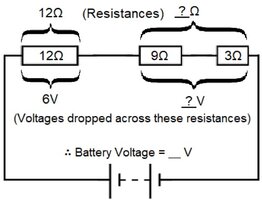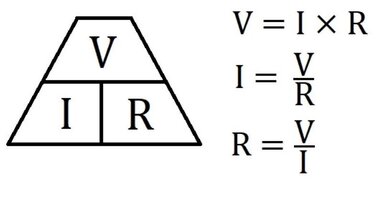Hello,
I'm trying to figure out how to determine source voltage of a DC series circuit. The only information given is
Resistor 1 = 12ohm
Resistor 2 = 9ohm
Resistor 3 = 3ohm
And the voltage drop across R1 is 6V.
The answer is 12V for the DC battery. But I can't figure out how to get to 12.
If I put 12V down as the battery size, and combine all three resistors 24ohm and use ohms law I can't come up with 12V.
R total = 24ohm
12V source battery
24 divided by 12 = 2Amps
Now if I go to R1 and knowing that the circuit amperage is 2, I get a voltage drop of 2A * 12ohm = 24V not 6V.
Where am I going wrong?
I'm trying to figure out how to determine source voltage of a DC series circuit. The only information given is
Resistor 1 = 12ohm
Resistor 2 = 9ohm
Resistor 3 = 3ohm
And the voltage drop across R1 is 6V.
The answer is 12V for the DC battery. But I can't figure out how to get to 12.
If I put 12V down as the battery size, and combine all three resistors 24ohm and use ohms law I can't come up with 12V.
R total = 24ohm
12V source battery
24 divided by 12 = 2Amps
Now if I go to R1 and knowing that the circuit amperage is 2, I get a voltage drop of 2A * 12ohm = 24V not 6V.
Where am I going wrong?


